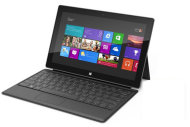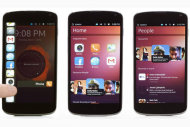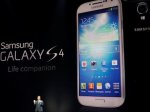Who can forget when HP spent $1.2 billion for Palm, only to give up on its entire ecosystem just 57 days after launching the first webOS tablet? Does anyone even remember Microsoft’s Kin phones, which disappeared in 2010 after just 48 days on the market? That’s faster than most Kardashian marriages.
Right now, there are a number of highly touted new technologies getting ready to take their place in the history books . . . as footnotes. These eight tech products aren’t likely to make it to 2014.
Windows RT
When Microsoft first announced that it was making a version of Windows 8 for ARM-based processors, we were excited by the possibility of a new generation low-power devices. Unfortunately, rather than doing what it does best -- providing a flexible platform for partners and developers -- Microsoft put Windows RT on lockdown, preventing it from running desktop applications and limiting it to a handful of devices that don’t cost much less than their Windows 8 counterparts.
Even worse, the company gave Windows RT the same exact UI as Windows 8, potentially confusing consumers who buy RT devices thinking that they’re getting the “real” Windows. Sales for Windows RT devices have been so bad and return rates so high that chip-makers like
Nvidia have publicly voiced their disappointment while partners like
Samsung have cancelled planned devices. Analyst firm IDC predicts Windows RT will achieve only a 1.9 percent marketshare in 2013 which will grow to just 2.7 percent by 2017.
What Microsoft should do is make Windows RT compatible with x86 desktop platforms and work with OEMs to lower the price of devices so they are price-competitive with Android tablets. What it will do is kill this failing platform by the end of the year.
Chromebook Pixel
Chromebooks as a category are doing very well, with the $249
Samsung Chromebook dominating Amazon’s list of best-selling laptop computers. With low prices and long battery life, Chromebooks are the 2013 answer to the netbook. However, just as consumers wouldn’t have paid $1,300 for a premium quality Eee PC in 2009, they won’t pay that much for a nicer Chromebook today.
When we reviewed the $1,299
Chromebook Pixel, we were impressed with its beautiful high-res touch screen, comfy keyboard and attractive design. However, for over $1,000 users want a complete desktop OS like Windows or Mac OS X. After its overpriced device fails to catch on with consumers,
Google will put the Pixel out to pasture and stop selling it by the end of this year.
Ubuntu Phone
Firefox OS, Tizen, Ubuntu Phone: how many new operating systems does the mobile phone market need? This year, all three of these new platforms are due to make their debut, competing with iOS, Android, Windows Phone and BlackBerry 10.
The PC market has room for an infinite number of platforms, because users can install the OS of their choice on any computer, even one they built themselves. On phones, your platform is worthless if both hardware vendors and carriers, both of whom are extremely conservative, don’t support it.
Samsung is throwing its weight behind Tizen and may even use the OS instead of Android on all its smartphones at some point. Several carriers and handset makers, including Alcatel and ZTE, have already shown off working Firefox OS phones that real carriers plan to sell outside the U.S. It looks like Ubuntu Phone, despite its attractive UI and ability to run desktop apps, will be the odd man out.
ASUS Taichi and Descendants
Dual-screen laptops have a rich but checkered history, with Lenovo, Kohjinsha and Acer all briefly experimenting with them.
ASUS now offers its own unique dual-screen design with the
ASUS Taichi 21, a notebook that has 11.6-inch screens on both sides of its lid. While the backfacing screen doesn’t give the users any additional screen real estate, they can show presentations or movies to people sitting across from them, a boon for business. However, even with just one screen activated, the Taichi’s battery life was a weak 4 hours and 37 minutes, a time which shrank to just over 3 hours with both displays on.
For $1,600, users expect more, but they won’t get it from ASUS. The innovative company knows when to drop a concept that isn’t working and Taichi isn’t. I don’t expect to see a sequel to this Gigli-like laptop.
Motorola Droid Line
From the long-lasting
RAZR Maxx HD to the compact
RAZR M, Motorola’s Droid line of Android phones are among the best in the business. Unfortunately, the company only sells its best products on Verizon, dumping mid-range and low-end handsets on the other carriers. To be a real success in the smartphone business, you need to sell the same flagship product across multiple carriers like Samsung has done with its
Galaxy S III.
Now that Google owns
Motorola, the Android-maker expects to “drain the pipe” of
current phones in development and start focusing on creating a few high-quality devices. I expect that part of that strategy will be an end to Verizon-only products as Motorola seeks to broaden distribution and simplify its product line. If the company comes out with any more Verizon exclusives this year, they’ll be the last.
Small-Time Smart Watches
Does anyone remember the Nokia 770? How about the Pepper Pad? Both devices were slate computers that came out the year before the first iPad. However, after Apple changed the market, these half-baked early stabs at a tablet were toast.
Today, we’re on the verge of a revolution in smart watches. Apple, Samsung, LG and Google are all reportedly working on major products for release this year. Meanwhile, early players like the pricey, unstable I’m Watch and the grayscale-only Pebble have either delivered unstable performance or a mediocre set of functions. By the end of the year, most of these first-gen watches will have been swept out of the market by big-name competitors with more polished products.
HTC Zoe
HTC’s not the clear market leader in smartphones by any stretch, but it’s still trying to build support for its own proprietary short video format, which it calls Zoe. If you own an
HTC One phone, you can record 3-second clips and then share them on HTC’s Zoe share site. Because Zoe is not a standard, the clips can’t be embedded in popular social media sites like Facebook or Twitter.
If you have some other brand of phone or even a different HTC handset, you can’t capture Zoes. Meanwhile, Twitter’s Vine videos, which are twice as long as Zoes, are becoming extremely popular and will likely soon extend beyond iOS to other platforms. Animated GIFs are also very popular, which is why Samsung has a special Cinema mode on the Galaxy S4 that lets you create them. I can’t imagine HTC continuing to push Zoes when its users want to create the same kind of short videos as all of their friends. short video niche.
Windows 8 Sliders
Sometimes, you have a good idea on paper that just doesn’t work in the plastic and metal world of hardware design. Since the launch of Windows 8, we’ve seen a number of hybrid systems that look like tablets but have keyboards and stands that slide out of the screen to turn them into clamshell shaped notebooks. Unfortunately, systems like the
Sony VAIO Duo 11 and
MSI Slider S20 offer the worst of both worlds: a thick, heavy tablet and a notebook with an uncomfortable keyboard and no wrist support. The MSI Slider S20 doesn’t even have a touchpad or pointing stick. Even worse, most of these devices cost a lot more than the combination of devices they’re meant to replace as users could buy both an iPad and a $700 notebook for the price of the $1,199 Duo 11.
While we don’t have sales numbers for sliders specifically, we know that few consumers want high-priced, uncomfortable devices. Manufacturers will catch on and, if there are still any sliders selling in the fall, this holiday season will be their last.
Copyright 2013
LiveScience, a TechMediaNetwork company. All rights reserved. This material may not be published, broadcast, rewritten or redistributed.













































































No comments:
Post a Comment